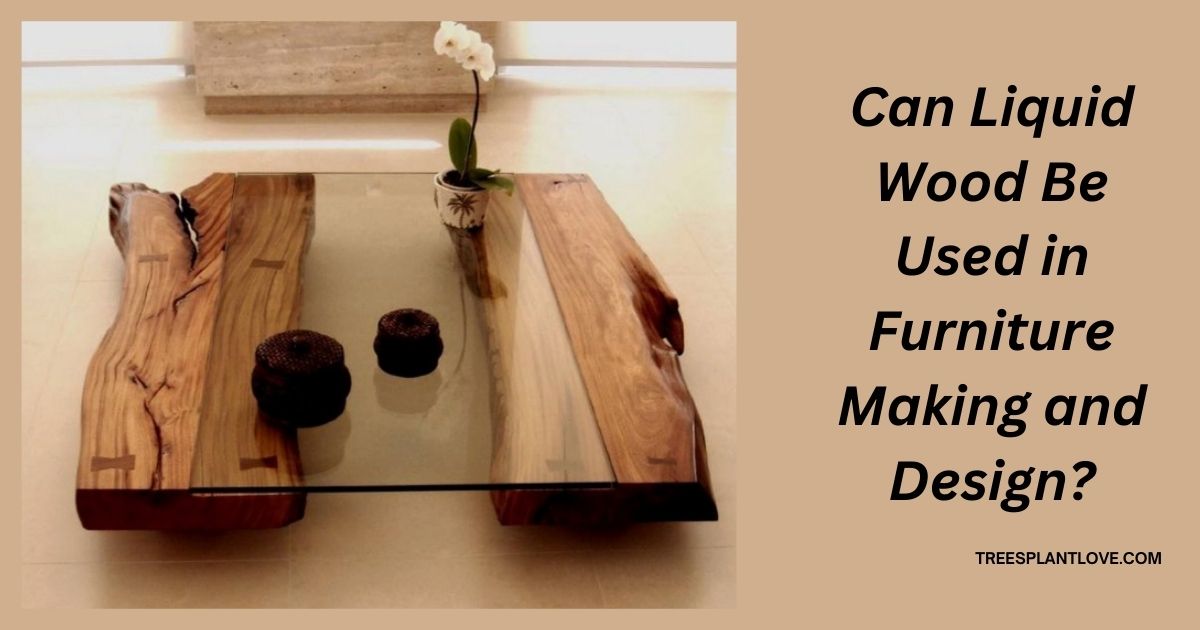
Can Liquid Wood Be Used in Furniture Making and Design? Benefits & Challenges
Can Liquid Wood Be Used in Furniture Making and Design?: As sustainability becomes increasingly important in various industries, the search for eco-friendly alternatives to traditional materials is gaining momentum. One such innovative material that has sparked significant interest is liquid wood.
This biodegradable and sustainable material has the potential to revolutionize industries ranging from packaging to construction. But what about its applications in furniture making and design? In this article, we will explore whether liquid wood can be used in the world of furniture design, its advantages, challenges, and how it could shape the future of sustainable furniture production.
What Is Liquid Wood?
Liquid wood, also known as Lignostone, is a synthetic material made from a combination of natural fibers—mainly wood and plant fibers—combined with resin and other biopolymers.
The resulting material can be molded, shaped, and hardened into a solid structure, making it a versatile alternative to traditional wood and plastic. Unlike plastic, liquid wood is biodegradable, and unlike conventional wood, it has a high level of strength and durability, making it ideal for a variety of applications.
The Potential of Liquid Wood in Furniture Making
Furniture design is a field where aesthetics, functionality, and environmental impact must be carefully balanced. Liquid wood offers numerous benefits that could make it an attractive option for furniture makers and designers looking for sustainable alternatives. Below are several reasons why liquid wood could be used in furniture making and design:
Sustainability and Eco-Friendliness
One of the most appealing aspects of liquid wood is its sustainability. Unlike plastic, which can take hundreds of years to decompose and has a detrimental effect on the environment, liquid wood is biodegradable. It is made from renewable plant-based materials, reducing its carbon footprint compared to traditional furniture materials like plastic or metal. For environmentally conscious furniture makers and consumers, this can be a game-changer. The ability to create furniture that is both functional and sustainable makes liquid wood a compelling choice.
Durability and Strength
Liquid wood is often compared to traditional wood for its strength and durability. Once processed, it hardens into a robust material with qualities similar to solid wood. This makes it ideal for use in furniture, where durability is a key factor. Liquid wood can withstand wear and tear, offering long-lasting performance. Its resistance to moisture, heat, and impact also makes it suitable for various environments, from home furniture to commercial and outdoor designs.
Design Flexibility
One of the key advantages of liquid wood is its ability to be molded into various shapes and forms during the production process. This flexibility makes it ideal for designers who want to push the boundaries of traditional furniture design. Liquid wood can be shaped into intricate patterns, smooth curves, and bold structures that would be difficult to achieve with solid wood or other conventional materials. Whether designing minimalist modern pieces or more complex, organic forms, liquid wood offers the versatility needed to create innovative and visually striking furniture.
Lightweight Nature
While liquid wood is durable and robust, it is also relatively lightweight compared to traditional wood and some metal materials. This characteristic can be particularly advantageous for furniture that needs to be easy to move or rearrange. In modern interiors, where flexible layouts are popular, lightweight furniture made from liquid wood could be a welcome addition. For designers and consumers, this means that furniture pieces can be practical without sacrificing strength or durability.
Aesthetic Appeal
Liquid wood retains much of the natural aesthetic appeal of wood, including its texture and color. It can be finished in a variety of ways—polished, matte, or even textured—to achieve different looks, from sleek and contemporary to more rustic and natural designs. Furniture made from liquid wood can have the same visual warmth and charm as wood, without the negative environmental impacts associated with traditional wood processing.
Challenges of Using Liquid Wood in Furniture Design
While the potential of liquid wood in furniture design is promising, there are some challenges that need to be addressed for it to become a mainstream material in the industry.
Cost of Production
Currently, liquid wood is more expensive to produce than traditional wood or plastic materials. The production process involves the use of specialized equipment and techniques, which can increase costs. For furniture makers, this may mean higher production costs, which could translate to more expensive final products for consumers. As the demand for sustainable materials grows and production methods become more efficient, it’s possible that the cost of liquid wood could decrease over time, making it more accessible for large-scale furniture production.
Limited Availability
While liquid wood is gaining attention in various sectors, it is not yet widely available for use in commercial furniture production. Manufacturers and designers may face challenges in sourcing liquid wood or finding suppliers who offer the material in the quantities needed for large-scale projects. As the material becomes more popular and demand increases, availability may improve, but for now, this is a limitation for many in the industry.
Durability Over Time
Although liquid wood is strong and durable, its long-term performance still needs to be studied extensively. Its biodegradability, while a benefit for the environment, could also raise questions about its lifespan in furniture applications. Research is still ongoing to determine how liquid wood holds up under different environmental conditions, such as exposure to sunlight, humidity, and temperature fluctuations. Furniture made from liquid wood will need to prove that it can stand the test of time without degrading or losing its structural integrity.
Conclusion: The Future of Liquid Wood in Furniture Design
Liquid wood has the potential to play a significant role in the future of sustainable furniture design. Its eco-friendly properties, durability, lightweight nature, and design flexibility make it an attractive option for forward-thinking furniture makers. However, challenges like production costs, limited availability, and concerns over long-term durability need to be addressed before it can become a widely used material in the furniture industry.
As technology advances and demand for sustainable materials grows, liquid wood could become more accessible and cost-effective, paving the way for innovative, eco-conscious furniture designs. In the coming years, we may see an increase in the use of liquid wood in the creation of sustainable, high-performance furniture that combines the best of modern design with environmental responsibility. Whether it’s used for home décor, office furniture, or even outdoor pieces, liquid wood could truly transform the way we think about and create furniture for the future.

Leave a Reply